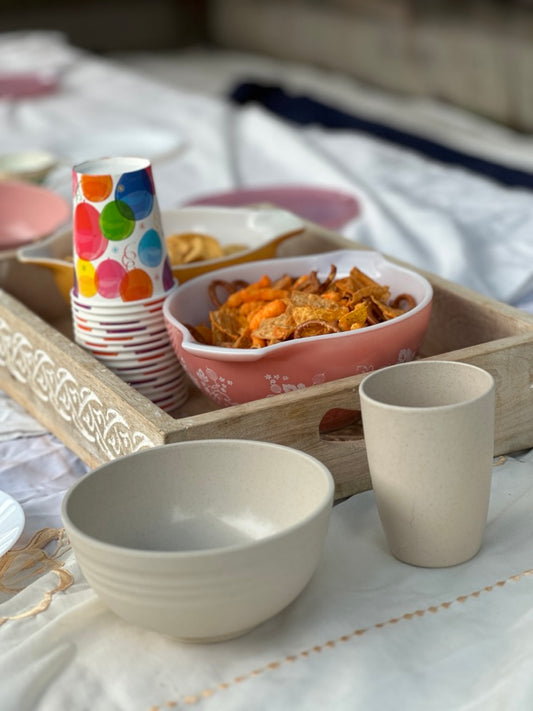In our daily lives, we have relied on plastics. A great deal of plastic garbage follows their path to waterways including rivers, lakes, and the ground. Since plastics cannot be broken down by biological processes, their presence in so many ecosystems pose serious risks to human health. To stop making and getting rid of harmful plastics, we need to switch to bioplastics.
What is Wheat Straw Plastic, and is it eco-friendly?
Wheat straw is a by-product of the wheat harvest. It is a natural and eco-friendly alternative to plastic plates. Wheat straw has been used for centuries as a material for making items such as paper, baskets, and mats. Nowadays, it is also used to create high-quality reusable tableware. This alternative to plastic plates can be produced in any color or design and can be made from any type of wheat straw, not just the types that are used for food production.
Even though wheat straw plastic doesn't seem like traditional plastic, it serves the same functions. Wheat straw plastic has been used to create a wide variety of everyday items, from straws and utensils to plates and even whole sofa sets, which is really astounding when you think about it. These materials might be a game-changer in the effort to reduce our reliance on traditional plastics since they are biodegradable, lightweight, and simple to use. The environmental impact of biodegradable plastic is lower, making it preferable.
Perks of Wheat Straw Plastic
Testing has shown that using plastic made from wheat straw is safe. Wheat straw plastic may be safely used in the microwave and freezer, and it does not attract or harbor allergens or gluten. Furthermore, the biodegradable plastic we are using here does not emit any foul scents and is rather tough to form. When in the bubble phase, water may be held at temperatures up to 100ºC without damage. However, its natural decomposition has important implications for human and environmental health. To a lesser extent, this strategy also aids in reducing the need to cut down trees, since wheat straws may be turned into paper. As the importance of protecting the environment becomes more generally known, the use of plastic made from wheat straw will continue to be a pillar of all businesses.
Why should we use Wheat Straw Plastics instead of traditional plastics?
Biodegradable plastics have several advantages over conventional polymers in traditional plastics that cannot be broken down in nature. To begin, organic disposal means it poses no threat to the natural world. Because of its potency and versatility, this physiologically benign chemical has applications across a broad variety of goods and sectors. As a low-cost choice that consistently provides desirable outcomes, this substance has maintained its popularity. Wheat straw plants are carbon-neutral since they take in more carbon dioxide than they give out via respiration, therefore they may be used in our current circumstances without adding any more pollution.
Gardeners and city inhabitants alike may soon reap the benefits of this formerly desolate terrain. If farmers can get a fair price for their wheat scraps, they could be willing to sell them. Biodegradable plastics are preferable for everyone since they need fewer resources to produce.
In addition to being more environmentally friendly, natural polymers provide a number of other benefits for both people and the planet. Reduced plastic use would make it easier for people everywhere to breathe. Biodegradable plastics should be widely used immediately if we are serious about preventing pollution from plastics. If we don't find an alternative, conventional plastics will be a major financial drain in the long run.





